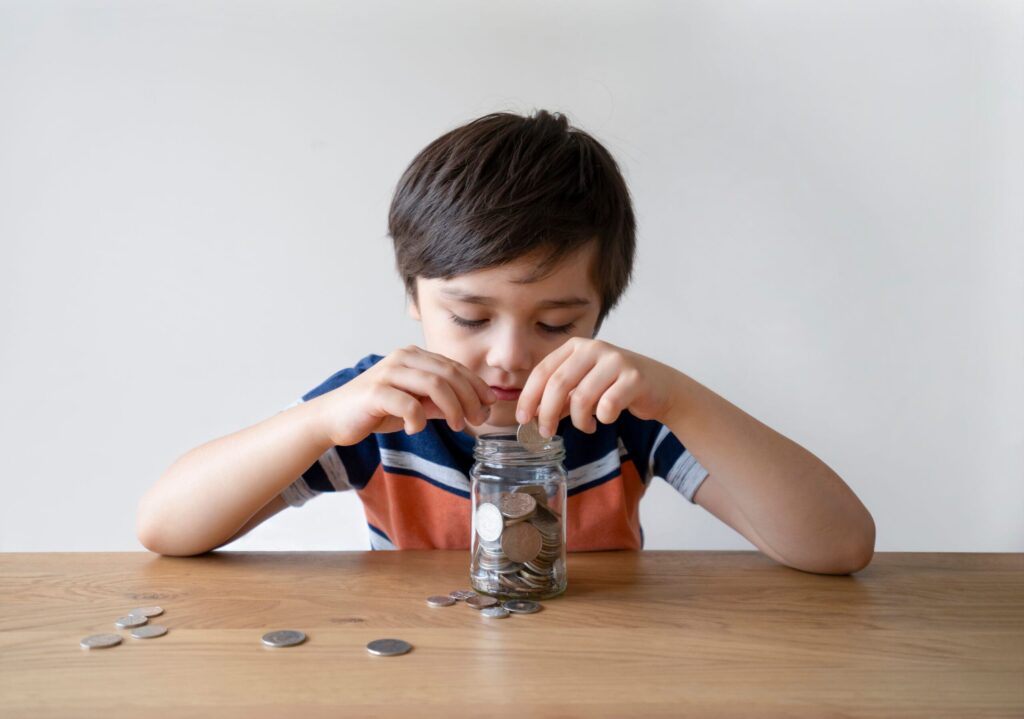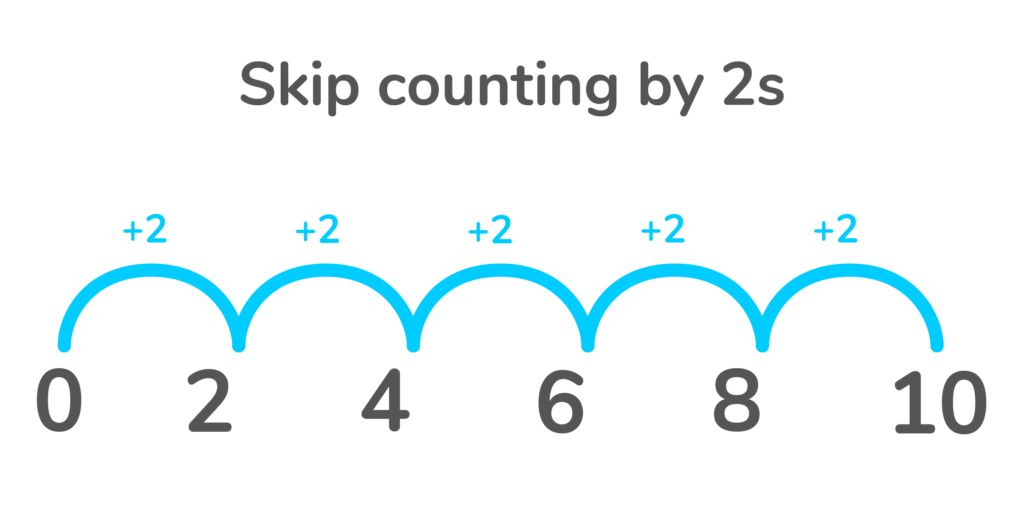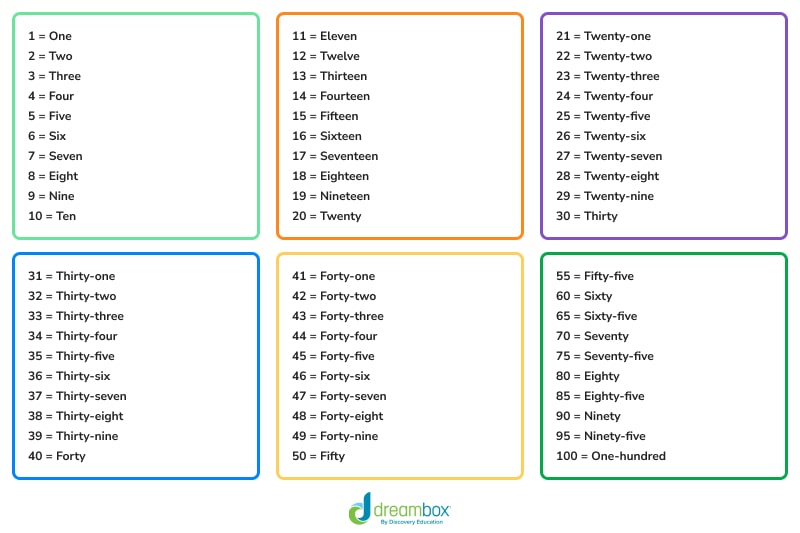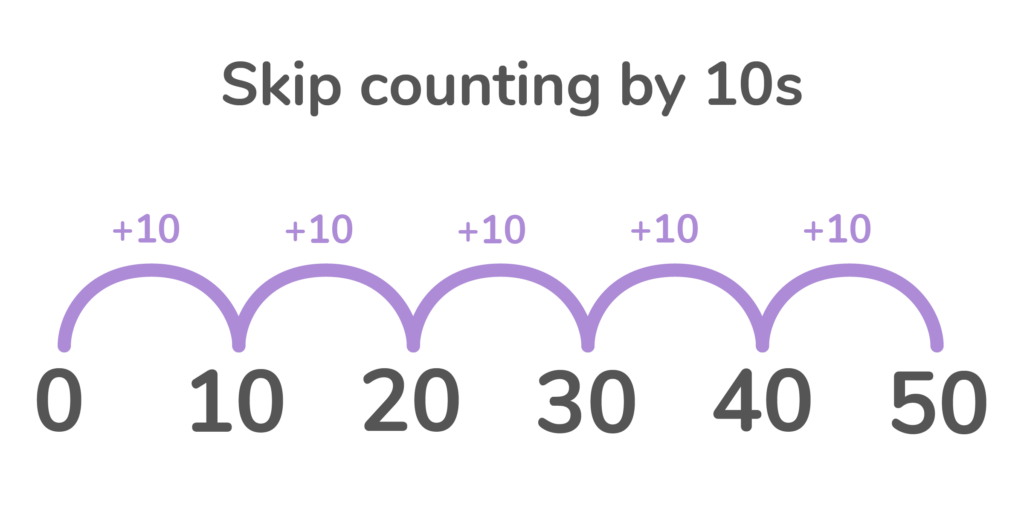Counting Comprehension
Dive into articles that turn math struggles into successes with engaging content crafted to boost kids’ math skills.
Counting is one of the most fundamental skills we acquire as children, acting as the gateway to the vast world of mathematics. It’s not just about reciting numbers; it’s about understanding quantity, order, and patterns. Whether it’s tallying the coins in our piggy bank or noting the days until a special event, counting enriches our understanding of the world around us. Dive in to explore the magic of counting!
Browse Most Popular Articles:
To count money faster, use the “counting on” method. Start with the greatest value and gradually move on to the smaller values as you go.
Counting by 2s introduces kids to number patterns and the basics of even and odd numbers.
Use a hundred chart to help students move from concrete math manipulatives to actual place values.
Skip counting by 10 is foundational skill in early math education, preparing children for more advanced numerical concepts.
Browse All Counting Skills:
Counting is a fun math skill essential for daily tasks and games. If you’re looking to get better or help someone learn, we’ve curated some easy-to-follow articles for you:
Learning to skip count can help students improve their counting fluency and recognize number patterns. Let’s learn more about these benefits and how to skip count by several different numbers.
Counting by 2s introduces kids to number patterns and the basics of even and odd numbers.
Skip counting by 10 is foundational skill in early math education, preparing children for more advanced numerical concepts.
Use a hundred chart to help students move from concrete math manipulatives to actual place values.
To count money faster, use the “counting on” method. Start with the greatest value and gradually move on to the smaller values as you go.
All About Measurement
What is Counting?
Counting is something we all do, starting from when we’re little kids. It’s simply figuring out how many things are in a group. For example, we count our toys, the steps we take, or the minutes we wait for something. But counting isn’t just a modern idea; ancient people understood its importance too. Long ago, they would count using stones, sticks, or even their fingers to keep track of things like the number of animals they had or days until an event. No matter the time or place, counting has always been a way for us to understand and organize the world around us. Learn more about counting and find practice problems on our math app.
What are Counting Numbers?
Counting numbers are the familiar numbers we start with during our earliest math lessons. Beginning from the number 1, they continue upward: 2, 3, 4, 5, and keep going. They form an essential part of our daily lives, representing how many of us have. Whether it’s counting apples in a basket, pages in a book, stars in the sky, or even footsteps on a journey, counting numbers are there to help us measure and understand quantity. These numbers are distinct from fractions or negative numbers and serve as the backbone for more complex mathematical concepts we encounter later in life.
Different Ways to Count
Counting can be done in many fun ways, not just one by one! Let’s look at some easy ways we often use:
- By Ones: This is starting from one and going up. Like 1, 2, 3, and so on. It’s how most of us begin to learn to count.
- By Twos: Imagine counting every second item. It’s like counting shoes: 2, 4, 6…
- By Fives: If you have a bunch of things, sometimes it’s quicker to count in groups of five: 5, 10, 15…
- By Tens: This is great for lots of items. It’s like counting by tens: 10, 20, 30…
- Skip Counting: This means jumping over some numbers. Like if you count by threes: 3, 6, 9…
Each way of counting is useful for different things. Whether we’re playing a game, shopping, or doing homework, there’s a counting method that can help!
Examples of Counting in Real Life
Counting is a skill with applications in almost every area of our daily lives:
- Shopping: Whenever we head to a grocery store or a shopping mall, counting is a consistent companion. It helps in keeping tabs on how many apples we’ve put in our bag, or when ensuring we receive the right amount of change at the checkout. And let’s not forget those moments when we mentally calculate whether we can afford one more item without exceeding our budget.
- Sports: On the sports field, counting takes center stage. A basketball player keeps track of how many free throws they’ve made, a soccer player might count how many goals they’ve scored in a season, and a race car driver knows the number of laps left in the race. Counting helps players strategize, understand their performance, and measure their progress.
- Cooking: The kitchen is another domain where counting reigns supreme. Aspiring chefs count how many teaspoons of salt go into a dish, or how many minutes a cake should be in the oven. When doubling or halving a recipe, understanding the quantities becomes crucial to get that perfect taste.
- Travel: Whether we’re planning a trip or are already on one, counting ensures our adventures run smoothly. It’s about counting the days until we embark on our journey, the stops left before our bus reaches the destination, or ensuring we don’t exceed our luggage weight limit at the airport.
- Household Tasks: Day-to-day tasks at home are riddled with instances of counting. Think about setting a timer while watering plants to ensure they get just the right amount, determining the number of tiles needed for a kitchen backsplash, or making sure there are enough plates on the table for dinner guests. Counting aids in organization and efficiency, making our homes run like well-oiled machines.
FAQs About Counting
Counting numbers are the numbers we use when counting objects, like 1, 2, 3, and so on. They don’t include fractions, decimals, or negative numbers. So, if you’re counting toys, cookies, or stars in the sky, you’re using counting numbers!
Counting is the starting point for learning math. It’s like the first step in building a big tower of math skills. When kids count, they get ready for adding and taking away numbers. Plus, we use counting all the time, like when shopping or setting the table. It’s a key tool for understanding and doing lots of everyday tasks.
Kids are naturally curious, and their journey into the world of numbers often starts sooner than we think. Many begin to show an interest in counting as young as two or three years old, sparked by simple activities like counting their fingers, toes, or the toys they play with. As they grow, this curiosity extends to counting steps on a staircase, or the number of birds they see at the park.
By the time they reach preschool age, a lot of children can confidently count up to ten, and some even venture beyond into larger numbers. This early exposure lays the groundwork for more complex math skills they’ll acquire in school. However, it’s essential to remember that every child is unique, and they develop these skills at their pace. There’s no rush.
What’s most important is creating a positive and fun environment around numbers. Integrating counting into daily activities, like setting the table or sorting laundry, can make it a more natural and enjoyable learning experience. Stories, songs, and games centered around numbers also encourage kids to embrace counting, setting them on a path to becoming confident counters.
Grades
If you’ve ever wondered how to help your child with math homework or what they should know by the end of fifth grade, these elementary math resources are for you.
Choose a grade level below to browse math skills and objectives by grade.
It’s time to build on what we’ve learnt so far and develop mathematical fluency.
Level up number knowledge with the introduction of multiplication, division and fractions.
Classifying, analysing and problem-solving: we’re applying all our skills here!
Understanding is extended even further across number, measurement and geometry.
Meet ratio, rational numbers and equations – this is where we explore statistical thinking.
Children learn more advanced topics like pre-algebra and investigate complex statistics and probability.
Introduce problems involving shape, scale drawings, population samples and more.
Take at home math practice to the next level
Empowering parents and educators to make math practice more impactful. Plus, your kids will love it.






